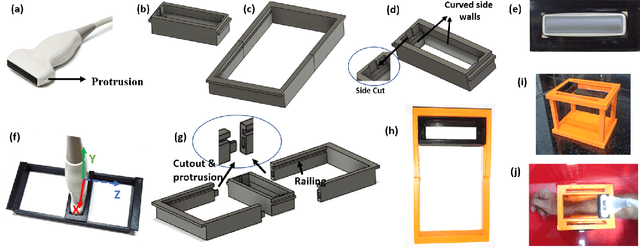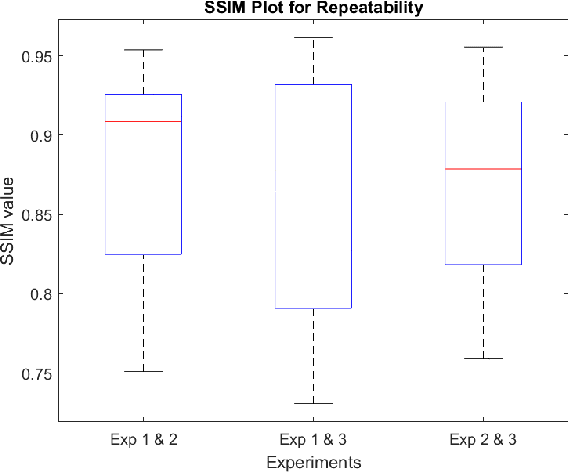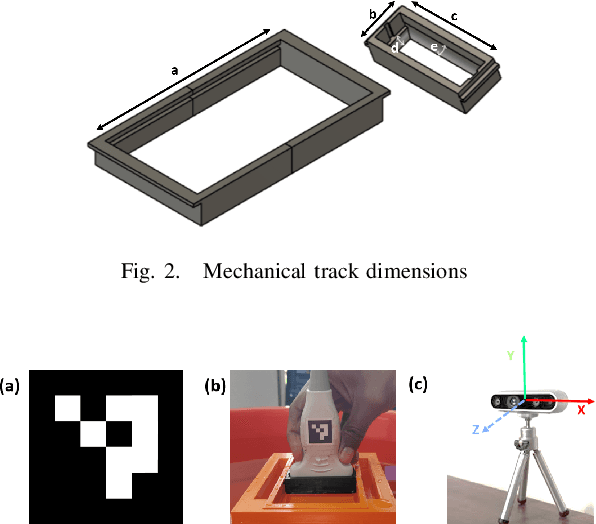A. N. Madhavanunni
A Performance Evaluation of Filtered Delay Multiply and Sum Beamforming for Ultrasound Localization Microscopy: Preliminary Results
Feb 27, 2024Abstract:Ultrafast ultrasound localization microscopy (ULM), which has shown promising results in microvascular imaging, overcomes the typical trade-off between resolution and penetration depth. Combining ultrasound contrast agents and high frame rate imaging enables ULM to visualize microvasculature and quantify flow. However, the quality of the microvascular maps obtained depends on the signal-to-noise ratio of the received signals, image reconstruction techniques, and the microbubble (MB) localization and tracking algorithms used. Most reported research in ULM employs the conventional delay and sum (DAS) beamforming technique for image reconstruction despite its limited contrast and resolution. In this work, a filtered delay multiply and sum (F-DMAS) beamforming approach with non-steered plane wave transmit was employed for ULM, and its performance was compared with the conventional DAS-based approach for the different localization algorithms available in the Localization and Tracking Toolbox for Ultrasound Localization Microscopy. We also introduce two novel image quality measures that can overcome the limitations of conventional quality metrics that require suitable targets for evaluation. We also report the preliminary in-vitro investigation of F-DMAS with B-mode and power Doppler maps for microvascular imaging. The results are promising with enhanced contrast and lateral resolution, and suggest that further experimental studies are warranted.
A Portable Ultrasound Imaging Pipeline Implementation with GPU Acceleration on Nvidia CLARA AGX
Oct 31, 2023Abstract:In this paper, we present a GPU-accelerated prototype implementation of a portable ultrasound imaging pipeline on an Nvidia CLARA AGX development kit. The raw data is acquired with nonsteered plane wave transmit using a programmable handheld open platform that supports 128-channel transmit and 64-channel receive. The received signals are transferred to the Nvidia CLARA AGX developer platform through a host system for accelerated imaging. GPU-accelerated implementation of the conventional delay and sum (DAS) beamformer along with two adaptive nonlinear beamformers and two Fourier-based techniques was performed. The feasibility of the complete pipeline and its imaging performance was evaluated with in-vitro phantom imaging experiments and the efficacy is demonstrated with preliminary in-vivo scans. The image quality quantified by the standard contrast and resolution metrics was comparable with that of the CPU implementation. The execution speed of the implemented beamformers was also investigated for different sizes of imaging grids and a significant speedup as high as 180 times that of the CPU implementation was observed. Since the proposed pipeline involves Nvidia CLARA AGX, there is always the potential for easy incorporation of online/active learning approaches.
Towards Non-contact 3D Ultrasound for Wrist Imaging
Oct 06, 2023



Abstract:Objective: The objective of this work is an attempt towards non-contact freehand 3D ultrasound imaging with minimal complexity added to the existing point of care ultrasound (POCUS) systems. Methods: This study proposes a novel approach of using a mechanical track for non-contact ultrasound (US) scanning. The approach thus restricts the probe motion to a linear plane, to simplify the acquisition and 3D reconstruction process. A pipeline for US 3D volume reconstruction employing an US research platform and a GPU-based edge device is developed. Results: The efficacy of the proposed approach is demonstrated through ex-vivo and in-vivo experiments. Conclusion: The proposed approach with the adjustable field of view capability, non-contact design, and low cost of deployment without significantly altering the existing setup would open doors for up gradation of traditional systems to a wide range of 3D US imaging applications. Significance: Ultrasound (US) imaging is a popular clinical imaging modality for the point-of-care bedside imaging, particularly of the wrist/knee in the pediatric population due to its non-invasive and radiation free nature. However, the limited views of tissue structures obtained with 2D US in such scenarios make the diagnosis challenging. To overcome this, 3D US imaging which uses 2D US images and their orientation/position to reconstruct 3D volumes was developed. The accurate position estimation of the US probe at low cost has always stood as a challenging task in 3D reconstruction. Additionally, US imaging involves contact, which causes difficulty to pediatric subjects while monitoring live fractures or open wounds. Towards overcoming these challenges, a novel framework is attempted in this work.
Fast Marching based Tissue Adaptive Delay Estimation for Aberration Corrected Delay and Sum Beamforming in Ultrasound Imaging
Apr 19, 2023Abstract:Conventional ultrasound (US) imaging employs the delay and sum (DAS) receive beamforming with dynamic receive focus for image reconstruction due to its simplicity and robustness. However, the DAS beamforming follows a geometrical method of delay estimation with a spatially constant speed-of-sound (SoS) of 1540 m/s throughout the medium irrespective of the tissue in-homogeneity. This approximation leads to errors in delay estimations that accumulate with depth and degrades the resolution, contrast and overall accuracy of the US image. In this work, we propose a fast marching based DAS for focused transmissions which leverages the approximate SoS map to estimate the refraction corrected propagation delays for each pixel in the medium. The proposed approach is validated qualitatively and quantitatively for imaging depths of upto ~ 11 cm through simulations, where fat layer induced aberration is employed to alter the SoS in the medium. To the best of authors' knowledge, this is the first work considering the effect of SoS on image quality for deeper imaging.
A Simplified 3D Ultrasound Freehand Imaging Framework Using 1D Linear Probe and Low-Cost Mechanical Track
Feb 16, 2023Abstract:Ultrasound imaging is the most popular medical imaging modality for point-of-care bedside imaging. However, 2D ultrasound imaging provides only limited views of the organ of interest, making diagnosis challenging. To overcome this, 3D ultrasound imaging was developed, which uses 2D ultrasound images and their orientation/position to reconstruct 3D volumes. The accurate position estimation of the ultrasound probe at low cost has always stood as a challenging task in 3D reconstruction. In this study, we propose a novel approach of using a mechanical track for ultrasound scanning, which restricts the probe motion to a linear plane, simplifying the acquisition and hence the reconstruction process. We also present an end-to-end pipeline for 3D ultrasound volume reconstruction and demonstrate its efficacy with an in-vitro tube phantom study and an ex-vivo bone experiment. The comparison between a sensorless freehand and the proposed mechanical track based acquisition is available online (shorturl.at/jqvX0).
 Add to Chrome
Add to Chrome Add to Firefox
Add to Firefox Add to Edge
Add to Edge